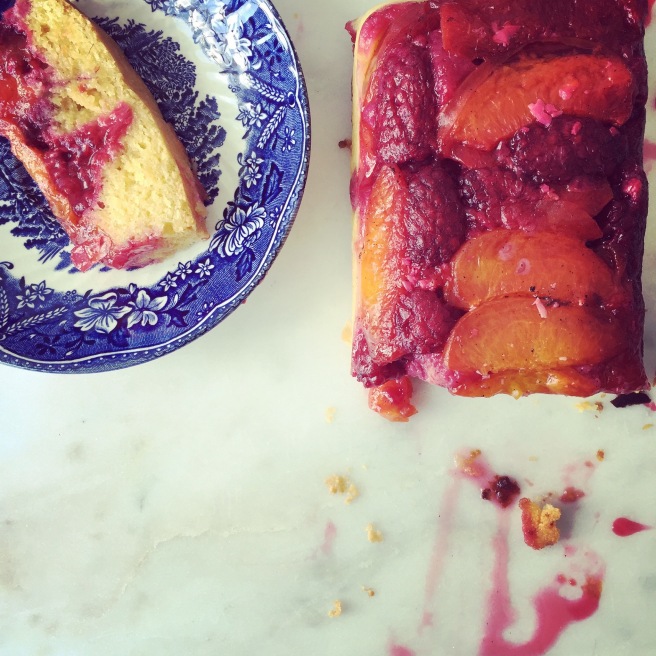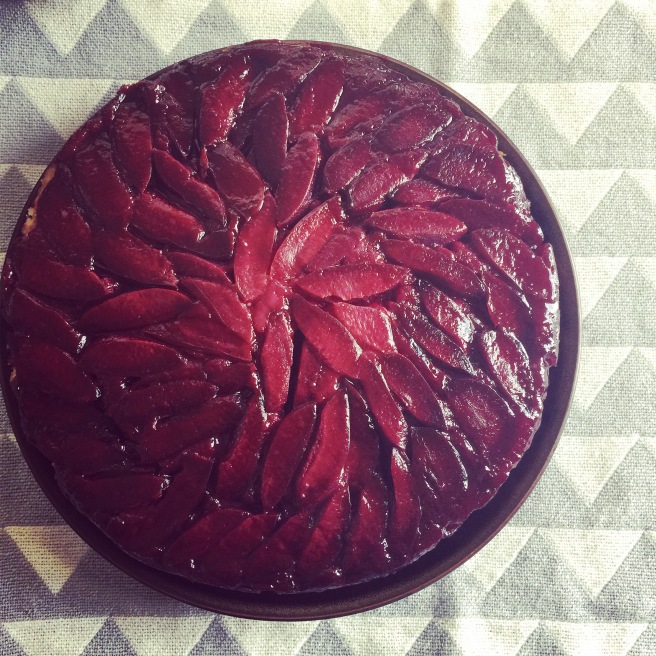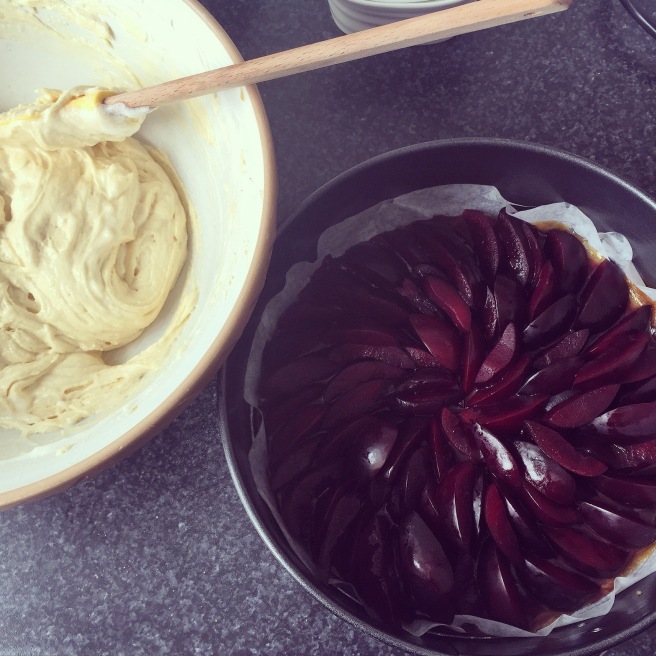Juicy berries can be messy eating. I’ve mentioned in the past how I’m just not one for white clothing as I constantly spill food all over the front. This is especially true when it comes to berry eating (cue COS white t-shirts now ruined and in the bin). This past summer, I have eaten my fair share of berries – mostly blueberries because I kept stumbling on farms where you pick your own for cheap. I also happened to discover the loganberry. These lipstick-hue berries are something else. A cross between a raspberry and blackberry, they are altogether juicier and sharper in flavour, and even better when cooked. I bet loganberries would make a beautiful jam with a hint of rose geranium (another new favourite! Post to follow shortly on the wonders of rose geranium).
Sometimes, if it’s just you and one other person in the house, you can’t be bothered getting your ‘bake on’. But I don’t think we should miss out, and besides, who says small can’t be better? I really advocate making just enough to eat and savour and not too much that it goes to waste. I always enjoy making mini-versions of bakes that will be just right for two greedy mouths. Plus, these daintier bakes don’t last long enough for you to get sick of them, and then you can swiftly move on to the next recipe you’ve Post-it noted. This recipe has been adapted from a Claire Ptak cake recipe, which featured in The Guardian column. You could basically use any fruit that you like and adjust the sugar to suit. I prefer to balance the fruit between one that releases a fair amount of juice when cooked (such as berries) and one that merely softens (such as apricot or stone fruit).
Loganberry and apricot sticky loaf
Makes 1 small loaf
75g softened unsalted butter, plus extra for greasing
75g caster sugar
1 medium egg
pinch of salt
100g plain flour
1/2 tsp baking powder
For the fruit
120g apricots
40g vanilla sugar, or caster sugar
seeds from 1/2 vanilla pod
90g loganberries
Greek-style yoghurt, to serve (optional)
Preheat the oven to 180°C. Grease a small loaf tin and line with baking parchment.
Slice the apricots into wedges and combine in a bowl with the sugar and vanilla seeds. Arrange in your prepared tin, alternating the apricot pieces with the raspberries however you like.
For the sponge, beat the butter and sugar until light in colour and delightfully fluffy. Add the egg, mixing well until incorporated.
In a separate bowl, whisk the flour, salt and baking powder. Gently mix this into the butter mixture until only just incorporated. Spread over the fruit and smooth over the top carefully.
Bake for 25–30 minutes, or until a skewer inserted into the centre comes out with only a few tiny damp crumbs attached. The top should be golden and springy to the touch.
Remove from the oven and allow to cool for 20 minutes, in the tin. To serve, run a knife along the inside of the tin and turn the loaf out on to your serving plate. Slice up and serve with yoghurt if you like.



